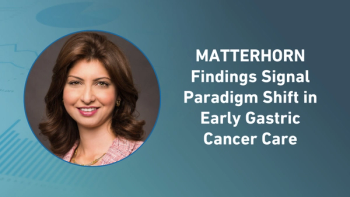
Direct-to-Patient Trials: Address Your Audience
CBI Conference Producer, Trevor Sosvielle, recently sat down with Matthew Amsden, CEO of ProofPilot to discuss his early work in HIV prevention trials. Amsden shares how these experiences helped shape ProofPilot and its patient-centric clinical trial approach.
CBI, the conference group sister of Applied Clinical Trials, is featuring
Trevor Sosvielle: Can you tell us about ProofPilot?
Matthew Amsden: ProofPilot is a platform to design and launch participant-centric trials. We are not an EDC or ePRO system. Technology has democratized high finance, journalism, transportation ... ProofPilot is doing the same thing with trials. For existing trial sponsors, we've made it easy to design engaging studies and launch them to participants. You can do it all on our platform. And you can engage participants across any device they have access to and even in person. No extra IT is required.
TS: How did ProofPilot get involved in HIV prevention studies?
MA: My experience in HIV trials inspired ProofPilot, though it wasn’t something I originally sought out to do. I was working at a prominent research firm, not as a researcher, but in marketing and technology. The researchers were having trouble recruiting gay men into their HIV studies. The bars and clubs that researchers used to recruit for HIV trials, just didn’t exist anymore because the community had moved online. I was the only out gay man at my company and I was young. So they came to me for help. Eventually, my help in recruitment and engagement turned into managing and supporting full-scale trials.
TS: What kinds of trials were you running?
MA: We were primarily running trials with healthy young men in US, Brazil, and Europe. The trials almost always included some technology. First MySpace and Facebook. Then digital apps. The trials included interventions to change behaviors and reduce risky behaviors. We weren't often looking at a molecule alone. Often the trials included combinations of treatments: digital, medical devices, behavioral interventions, in-person counseling. The protocols make interventional drug trials look so simple. The orientation of looking beyond the typical protocol stuck with me. A lot of the studies we do today are not focused solely on a molecule or medical device. We're able to be more holistic.
TS: What were some of the key challenges that led to ProofPilot?
MA: It was tough. I think we all know that the clinical trial planning process can be a nightmare. Early on, we were a consulting firm. So all we were doing was layering on technology development and consumer marketing into the planning process. It wasn't pretty. It took forever to plan a study. We'd use the plan to develop something in ResearchKit or modify Redcap. Then the protocol would change. We'd have to go back and change the code. It was a mess.
We developed ProofPilot first to address our own challenges with the planning and launch process. Then it grew into the focus of our business.
TS: Why was this HIV prevention experience so formative for you, and eventually ProofPilot?
MA: Gay men, the primary target for these studies, are technology early adopters. So five or so years or before the wider world was sharing every detail of their lives online, we were experimenting.
But more than that, we had to figure out how to make the trial process valuable for the participant. We were engaging healthy 20-year-olds. They saw no advantage in heading into a clinic for a banal study experience. We had to turn the research study into a new form of online entertainment.
TS: What advice would you give someone thinking about starting a participant-centered trial?
MA: Be careful about following the scientific literature on participant engagement. The scientific literature cycle doesn't move at the speed of consumer behavior or tech innovation.
For example, sponsors often reference a 2011 journal publication I was involved in. It says to give participants tools to schedule when they receive SMS reminders. It suggests that choice improves participation rates.
That may have been the case a couple of years ago. It makes almost no difference now. Users receive so many push notifications, SMS messages, and e-mail today. So many that both Apple and Google now group notifications due to user outcry. Whatever they receive from your study is going to be queued up like everything else.
But the scientific literature hasn't caught up.
TS: You are gay and a founder and CEO. Has that influenced how you think about running your business?
MA: Yes. It's led me to be more aware and appreciate diverse audiences. We hear a lot about the LGBT community as if it is one demographic audience. It's not. A white gay guy in Manhattan is entirely different from an African-American gay guy in Jacksonville, Mississippi. Research questions are different. Participant expectations are different. Trust is different. In this cultural and political time, recognizing and respecting those differences is paramount.
Want to hear more? Join us at the
Trevor Sosvielle, Program Manager, CBI
Newsletter
Stay current in clinical research with Applied Clinical Trials, providing expert insights, regulatory updates, and practical strategies for successful clinical trial design and execution.






.png)



.png)



.png)
.png)
